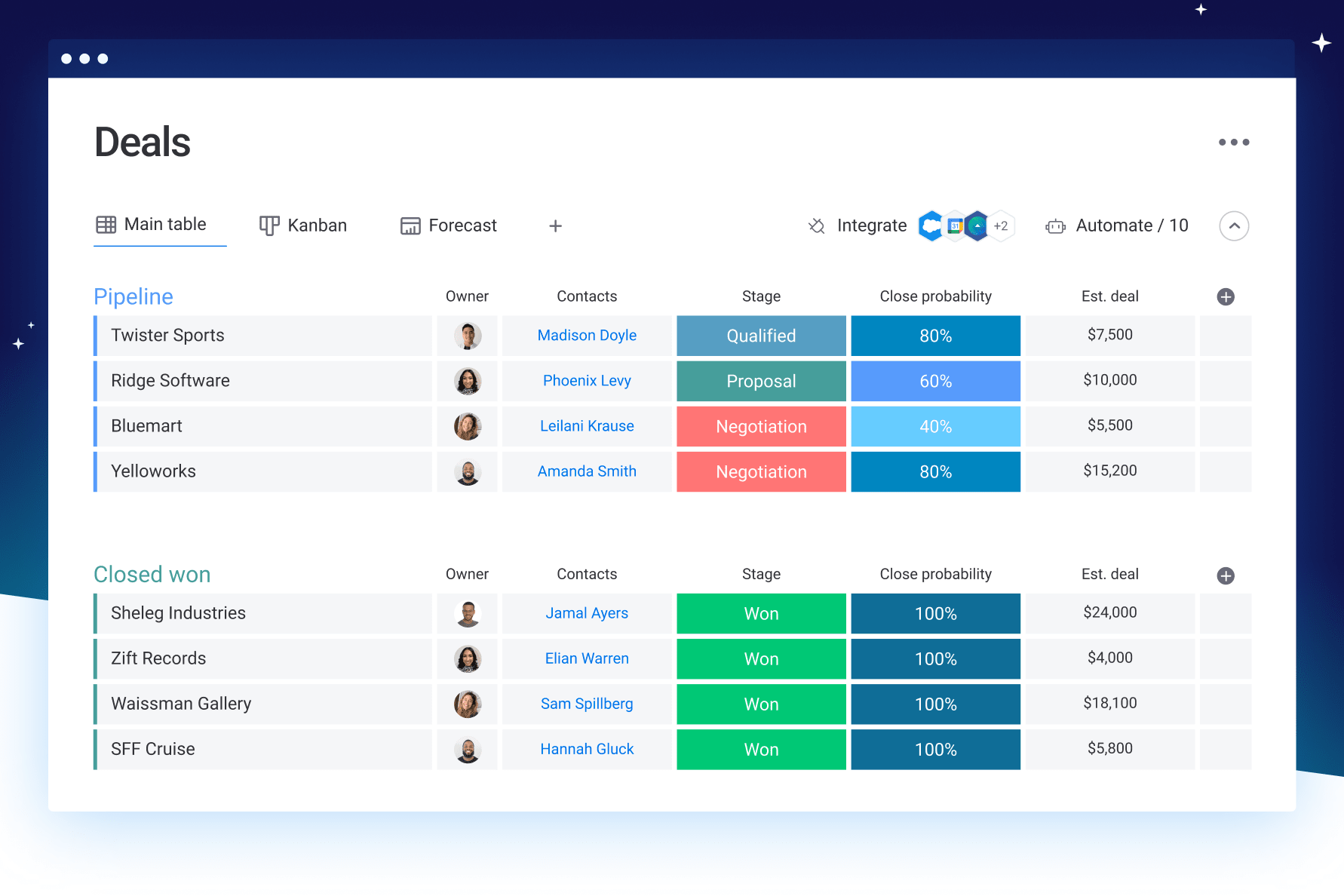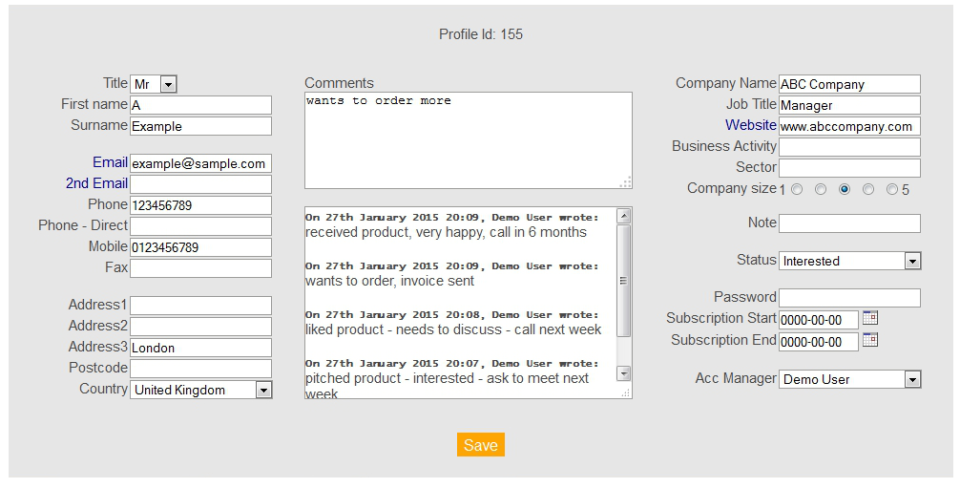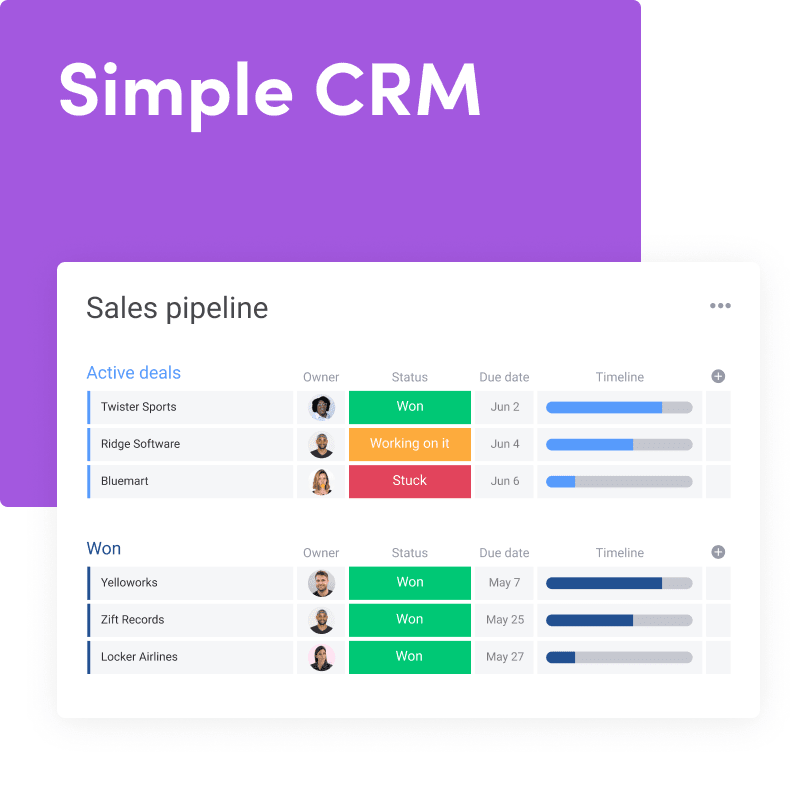CRM Simple: Navigating the complexities of customer relationship management doesn’t have to be a daunting task. This guide delves into the world of simple CRM systems, exploring their core principles, key features, and the benefits they offer to small businesses and startups.
By understanding the essence of CRM simplicity, you can streamline your operations, enhance collaboration, and elevate customer satisfaction. Join us as we uncover the secrets to implementing and maintaining a simple CRM system that empowers your business.
Understanding CRM Simplicity

CRM simplicity refers to the implementation of customer relationship management (CRM) systems that prioritize user-friendliness, ease of implementation, and cost-effectiveness. It focuses on streamlining CRM processes, reducing complexity, and providing an intuitive user experience.
Benefits of Simple CRM Systems
Implementing a simple CRM system offers several benefits, including:
- Improved User Adoption:Simple CRM systems are easy to understand and navigate, leading to higher user adoption and engagement.
- Faster Implementation:With less complexity, simple CRM systems can be implemented quickly and efficiently, minimizing disruption to business operations.
- Reduced Costs:Simple CRM systems typically have lower licensing and implementation costs compared to more complex solutions.
- Increased Efficiency:Streamlined processes and intuitive interfaces improve productivity and efficiency for sales, marketing, and customer service teams.
- Enhanced Customer Experience:Simple CRM systems provide a seamless experience for customers, enabling businesses to build stronger relationships.
Examples of Simple CRM Systems
Examples of simple and user-friendly CRM systems include:
- HubSpot CRM:A free and easy-to-use CRM system suitable for small businesses and startups.
- Salesforce Essentials:A simplified version of Salesforce’s CRM suite, designed for small and medium-sized businesses.
- Zoho CRM:A comprehensive CRM system with a range of features, offering a free plan for up to 10 users.
- Pipedrive:A sales-focused CRM system with a visual pipeline interface and drag-and-drop functionality.
- Insightly:A cloud-based CRM system with a user-friendly interface and integrations with popular business applications.
Key Features of a Simple CRM: Crm Simple

Simplicity is a crucial aspect of CRM systems, as it enhances usability, adoption, and overall efficiency. A simple CRM is characterized by several key features that streamline its functionality and make it accessible to users of all levels.
These features include:
Intuitive User Interface
- A user-friendly interface with clear navigation and minimal clutter.
- Well-organized dashboards and customizable views for personalized experiences.
- Drag-and-drop functionality for effortless data management.
Ease of Setup and Customization
- Quick and straightforward setup process with minimal technical expertise required.
- Flexible customization options to tailor the CRM to specific business needs.
- Pre-built templates and industry-specific configurations for faster implementation.
Automation and Efficiency
- Automated workflows to streamline tasks, such as lead generation, follow-ups, and appointment scheduling.
- Integration with other business tools, such as email, calendar, and social media, for seamless data flow.
- Reporting and analytics tools for data-driven decision-making.
Mobile Accessibility, Crm simple
- Responsive design for access from any device, including smartphones and tablets.
- Mobile apps for on-the-go access to customer information and updates.
- Offline functionality for uninterrupted productivity even without internet connectivity.
Affordability and Scalability
- Cost-effective pricing models tailored to different business sizes and budgets.
- Scalable solutions that can grow with businesses as they expand.
- Flexible subscription options to adjust usage as needed.
By incorporating these key features, simple CRM systems empower businesses to improve customer relationships, streamline operations, and achieve their growth goals with ease.
Benefits of Using a Simple CRM

Small businesses and startups can greatly benefit from implementing a simple CRM system. These systems are designed to streamline operations, enhance collaboration, and improve customer satisfaction. By utilizing a simple CRM, businesses can experience numerous advantages that contribute to their growth and success.
Improved Productivity
- Simple CRMs automate repetitive tasks, such as lead generation, email campaigns, and scheduling appointments. This automation frees up valuable time for employees, allowing them to focus on more strategic initiatives that drive business growth.
- Centralized data storage eliminates the need for multiple spreadsheets and disparate systems. This streamlined approach improves data accessibility and reduces the risk of errors, enhancing overall efficiency.
Enhanced Collaboration
- Simple CRMs provide a shared platform for teams to access and update customer information. This real-time collaboration eliminates communication barriers and ensures that everyone has the most up-to-date information.
- Integrated communication tools, such as email, chat, and video conferencing, facilitate seamless communication within the team and with customers.
Increased Customer Satisfaction
- Simple CRMs help businesses track customer interactions and preferences, enabling them to provide personalized experiences. This personalized approach fosters stronger customer relationships and increases satisfaction.
- Improved customer service through quick and efficient issue resolution enhances customer loyalty and drives repeat business.
Case Study: Small Business Success with Simple CRM
ABC Widgets, a small manufacturing company, implemented a simple CRM to manage its customer relationships. Within a year, the company experienced a 20% increase in sales due to improved lead tracking and personalized customer interactions. The CRM also streamlined operations, freeing up time for the sales team to focus on building relationships with potential customers.
Challenges of Implementing a Simple CRM
Implementing a simple CRM system can bring about certain challenges that need to be addressed for a successful implementation. These challenges include data migration, user training, and ensuring data accuracy.
Data Migration
Migrating data from an existing system or multiple sources into a new CRM can be a complex and time-consuming process. The data must be cleaned, standardized, and formatted to ensure compatibility with the new system. Additionally, there may be issues with data duplication or missing information that need to be resolved.To overcome these challenges, it is important to plan the data migration process carefully and allocate sufficient time and resources.
It is also recommended to use data migration tools or services to automate the process and minimize errors.
User Training
Another challenge is ensuring that users are adequately trained on the new CRM system. Users need to understand how to navigate the system, enter and manage data, and generate reports. Without proper training, users may not be able to fully utilize the CRM system, which can limit its effectiveness.To address this challenge, it is essential to provide comprehensive training to all users.
This training should cover both the technical aspects of the system as well as best practices for data management and reporting. It is also helpful to provide ongoing support and resources to users as they become familiar with the system.
Data Accuracy
Maintaining data accuracy is crucial for the success of any CRM system. Inaccurate data can lead to errors in reporting, poor decision-making, and wasted time and resources.To ensure data accuracy, it is important to establish clear data entry guidelines and processes.
This includes defining data standards, setting up validation rules, and providing data entry training to users. Additionally, regular data audits should be conducted to identify and correct any errors.By addressing these challenges and implementing best practices, organizations can ensure a smooth and successful implementation of a simple CRM system.
This will enable them to maximize the benefits of the system and improve their overall customer relationship management.
Best Practices for CRM Simplicity

Maintaining CRM simplicity throughout implementation and usage is crucial for maximizing its effectiveness and user adoption. By adopting best practices, organizations can streamline processes, optimize data management, and improve user experience, ensuring the CRM remains a valuable tool that supports business growth.
Here are some key best practices for CRM simplicity:
Define Clear Objectives and Requirements
Clearly define the objectives and requirements for the CRM system before implementation. This will help ensure that the system meets the specific needs of the organization and is not overly complex or feature-rich.
Start with a Small Scope
Begin with a small scope for the CRM implementation, focusing on the most critical features and processes. This will make the implementation more manageable and less disruptive to the organization.
Use a User-Centric Approach
Design the CRM system with the end-user in mind. The interface should be intuitive and easy to navigate, and the system should provide the necessary information and functionality without overwhelming users.
Automate Workflows
Automate repetitive tasks and workflows to reduce manual effort and streamline processes. This will free up time for users to focus on more strategic activities.
Integrate with Other Systems
Integrate the CRM system with other business systems, such as ERP and marketing automation platforms. This will provide a single source of truth for customer data and improve the overall efficiency of the organization.
Monitor and Measure Usage
Monitor the usage of the CRM system and collect feedback from users. This will help identify areas for improvement and ensure that the system is meeting the needs of the organization.
Ending Remarks
Embracing CRM simplicity is a journey that can transform your business operations. With the right approach, you can harness the power of a user-friendly CRM system to drive productivity, foster collaboration, and cultivate lasting customer relationships. Remember, simplicity is not about cutting corners; it’s about empowering your team with a tool that enhances their efficiency and enables them to deliver exceptional customer experiences.
Q&A
What are the key benefits of using a simple CRM?
Simple CRM systems streamline operations, improve productivity, enhance collaboration, and elevate customer satisfaction.
How can I ensure a smooth implementation of a simple CRM?
Planning, data migration, user training, and continuous optimization are crucial for a successful CRM implementation.
What are some best practices for maintaining CRM simplicity?
Regularly review and streamline processes, optimize data management, and seek user feedback to maintain CRM simplicity.
